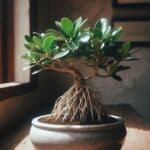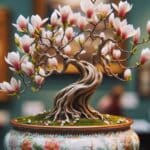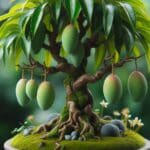Bamboo can be an excellent plant to use if you want to grow your mini forest. Bonsai artists will try to miniaturize just about any plant species. Some varieties like bamboo are, however, complex to use for a single bonsai since the upright design and structure of the tree can be challenging to work with.
It is, however, possible to create an attractive mini forest if you group a whole bunch of mini bamboo plants in a flattened container.
Bonsai forests are prevalent among enthusiasts because this plant species has a strong historical and cultural meaning. This plant is associated with strength, flexibility, and growth, and its vibrant green foliage is perfect for brightening up any dull space.
Let’s look at the best way to grow a mini bamboo forest.
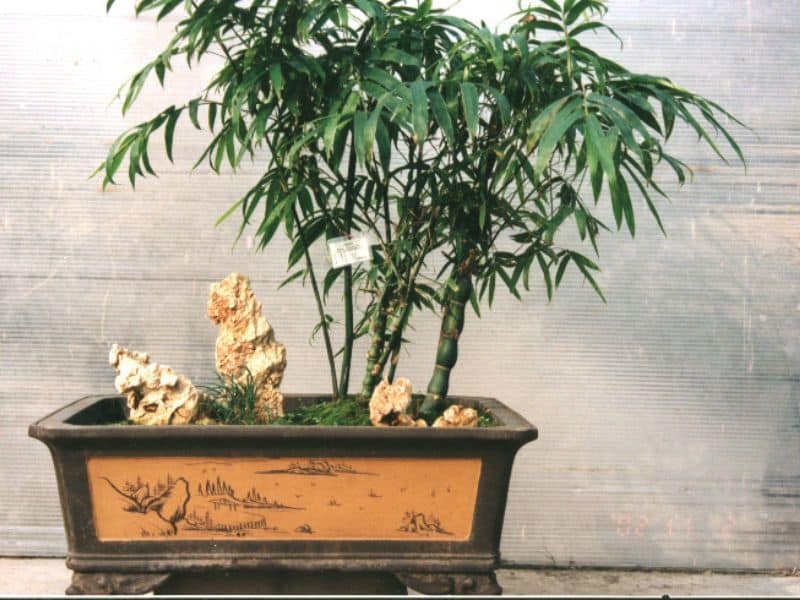
Plant Facts
| Scientific name | Bambusa |
| Common names | Tiny fern bamboo, Chinese dwarf bamboo, weeping bamboo, pygmy bamboo, fountain bamboo, lucky bamboo |
| Family | Poaceae |
| Plant Type | Ornamental |
| Height and Width | Up to 100 ft. tall (natural), 1–3 ft. tall (bonsai) |
| Origin | Which countries, regions? |
| Flower colors | None |
| Foliage color | Light green |
| Sun Exposure | Indirect to direct sunlight (the more sun the faster the growth) |
| Soil Type & pH | Well-drained, normal bonsai mix |
| Special features | The fastest-growing woody evergreen, pairs well with natural ornaments like rocks and moss, suitable for container-growing |
What Does a Bamboo Bonsai Look Like
Bamboo is woody grass with a hollow core and foliage that can sprout from the nodes. They usually don’t have too many branches, so it can be difficult to create an interesting bonsai from just one specimen.
Most bonsai enthusiasts combine bamboo plants to create a bonsai forest. Combining bamboo plants can look impressive, and these arrangements can easily be paired with natural decorations like moss and rocks to create an even more exciting display.
Where Can a Bamboo Bonsai Grow
Bamboo is considered indoor bonsai because extremely cold or hot temperatures can damage it. The tree will grow well in any well-lit humid area if protected from drafts or extreme heat
How to Grow a Bonsai Bamboo Tree
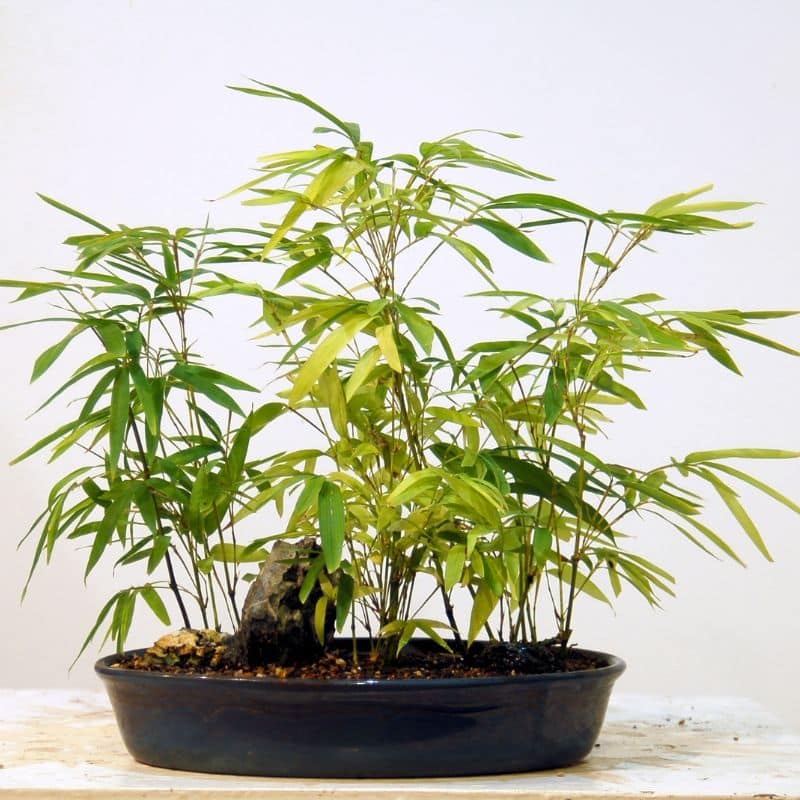
The stems of some bamboo species can be modified and twisted to give the tree a more exciting appearance. Bonsai artists are, however, restricted when it comes to bonsai styles because of the natural characteristics of this plant. Bamboo has an upright structure with minimal branching.
Even though the styling options for this type of plant are limited, it is still easy to grow and care for the plant. These woody plants have an astonishing growth rate and are perfect for quickly developing a fascinating bonsai specimen.
Let’s take a look at how to grow this tree.
Propagation
Bamboo species are pretty easy to grow from cuttings but you can also check local nurseries to get some young plants. Dwarf varieties tend to be most suitable for these types of creations so keep an eye out for miniature cultivars to propagate.
Clump-forming bamboo species can also propagate through their rhizomes. These rhizomes can be divided if you want to make the clumps smaller or if you want to create more plants.
Soil
Bamboo likes to grow in loamy soil that drains well. It also develops best in slightly acidic soil types. This type of bonsai should grow pretty well in commercial bonsai soil mixes but you can also whip up your own soil by mixing together equal parts of Akadama, Pumice, and lava rock.
Pruning
The unique structure of this plant makes it unsuitable for wiring. You can wire the tree to create an exciting look, but for most bonsai artists, it is better to work simply with the tree’s natural structure.
It is best to focus on regular pruning instead. If the plant is regularly pruned, it will create more dense growth and a more delicate structure.
Bamboo plants have a fast growing rate, so you will likely need to prune it several times throughout the growing season.
To maintain your little forest, you must constantly remove overly large foliage or bamboo shoots that become too tall or thick.
Repotting and Transplanting
These fast-growing plants should be repotted yearly because they can quickly deplete all the nutrients in the soil or the roots can become too vigorous for the container.
When you are repotting the bonsai tree, you should trim your bonsai back about one-third of the root system and re-establish it in fresh new soil.
Keep the newly potted plant moist for two weeks so the roots can recover.
How to Care for a Bonsai Bamboo
A bonsai bamboo forest will need regular pruning but it is pretty easy to care for these rapidly growing plants. Here is a quick look at its basic requirements.

Water
These plants should be watered daily because they prefer moist soil and can be very thirsty. If they dry out too much, the roots can become damaged.
Sunlight
The more sunlight bamboo gets, the quicker it will grow. You can position your mini forest in an indirect light position to slow down its growth.
Temperature and Humidity
The ideal temperature for bamboo is between 12 and 30 degrees Celsius. This type of bonsai should be protected from scorching temperatures and frost, so it is usually best to keep it indoors throughout the year.
Your bonsai forest will also flourish if it has a lot of humidity. Please place it in a humidity tray on top of some pebbles to create a more humid environment.
Fertilizer
Bamboo bonsai forests will stay healthy and vigorous if you offer a mild fertilizer throughout the growing season. Fertilizing can be reduced during the colder months of the year.
Pests and Diseases
Your bamboo bonsai faces threats from tiny invaders! Watch for sap-sucking aphids and scale insects, which cause yellowing leaves. Red spider mites thrive in dry environments, leaving behind webbing and discolored foliage.
Common Varieties and Cultivars
Bamboo is actually a type of grass with a woody, hollow stem. There are over 10,000 different species of bamboo and most can be successfully used for bonsai. The structure and appearance of these different varieties may look different and some of the best varieties to use for mini forest creations include the following:
- Buddha’s Belly Bamboo (Bambusa ventricosa)
- Dwarf Bamboo (Bambusa multiplex)
- Dwarf White Stripe Bamboo (Pleioblassstus fortunei)
- Pygmy Bamboo (Pseudosasa owatarii)
Conclusion
Bamboo forests can be good indoor bonsai and are perfect for beginners because they overgrow. It is relatively easy to start over if you need help with your bonsai. They require a lot of pruning throughout the year and must be kept moist at all times, but are usually easy growers that anyone can master.
We hope you enjoyed our guide and wish you all the best while growing your mini forest.


